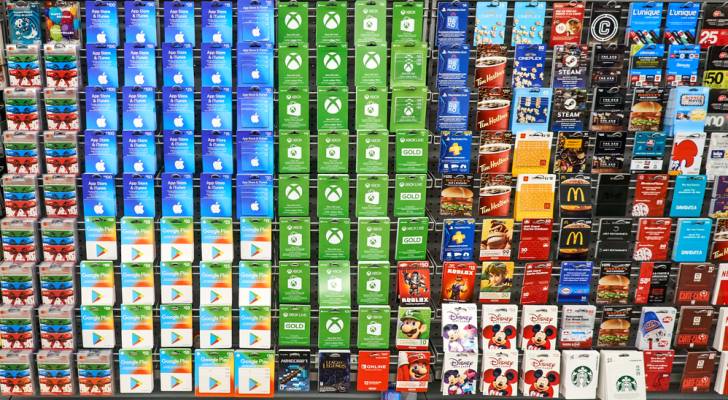
Gift cards may be a convenient and popular gifting choice, but they’re also a hot target for scammers. According to the Canadian Anti-Fraud Centre, Canadians reported losing over $3.8 million to gift card fraud in 2021 alone, a number that experts believe underrepresents the full extent of the problem.
In a recent Toronto Star feature, Nunzio Romano detailed his experience of purchasing 20 gift cards, only to discover that seven were empty. "I was shocked," he said. “That’s more than a third of the cards. It’s a substantial loss.”
This form of fraud typically occurs when scammers tamper with cards on retail racks, copying card numbers and covering PINs with fake labels. Once a customer buys and activates the card, the fraudster quickly drains the balance.
How gift card scams work
Scammers have become increasingly sophisticated. As cybersecurity expert Tom Keenan from the University of Calgary explained to CTV News:
“Bad guys are scooping up a bunch of gift cards, taking them somewhere and putting labels over the barcode. When someone activates the card, they’re ready to go and drain it.”
These altered cards can be difficult for customers to detect in-store. And once the funds are stolen, recovering them is often impossible.
Even when customers report fraud, retailers often deny reimbursement, citing that the funds were used or transferred before the issue was reported. Many shoppers find themselves in a bureaucratic tug-of-war with no resolution.
What retailers are doing about it
Retailers are under pressure to improve security. In Ontario, the Retail Council of Canada is working with law enforcement to implement changes, such as:
- Moving gift cards behind store counters
- Installing security cameras near gift card displays
- Adding real-time monitoring of card activation
But for now, much of the burden still falls on consumers to recognize red flags and protect their purchases.
Practical tips to protect yourself from gift card scams
Here are proactive steps consumers can take to reduce the risk of falling victim:
- Buy from safe sources: Purchase gift cards directly from the retailer’s website or behind-the-counter displays.
- Check the packaging: Look for signs of tampering, such as scratched PINs, torn backing or mismatched barcode stickers.
- Use cards quickly: The longer a card sits idle, the more time a scammer has to access it.
- Keep your receipt: If something goes wrong, the receipt may help you recover the funds, or at least prove the card was purchased.
- Register cards online (when possible): Some retailers allow you to register the card to your name, which can provide an additional layer of security.
What to do if you’ve been scammed
If you suspect you’ve purchased a compromised gift card, act quickly:
- Contact the retailer where the card was purchased and where it was meant to be used.
- Report the fraud to the Canadian Anti-Fraud Centre at antifraudcentre-centreantifraude.ca.
- File a police report. It may be necessary for any follow-up claims or investigations.
- Alert your credit card company if you used a credit card to purchase the gift card, as some issuers may offer protection.
The bottom line
Gift cards may seem like a simple and safe gift, but in today’s environment, they come with hidden risks. Understanding how scams work, and taking a few extra precautions, can protect your money and reduce the likelihood of falling victim.
Sources
1. Cision: Retail Council of Canada partnering with the Ontario Provincial Police and Canadian Anti-Fraud Centre to protect consumers against gift card fraud (March 1, 2022)
2. Toronto Star: He bought 20 gift cards and 7 were worthless: Gift card fraud is out of control — and retailers aren’t doing enough to stop it (April 11, 2025)
3. CTV News: Calgarian’s newly-bought gift card skimmed by thieves before she got to use it (February 23, 2023)
This article provides information only and should not be construed as advice. It is provided without warranty of any kind.